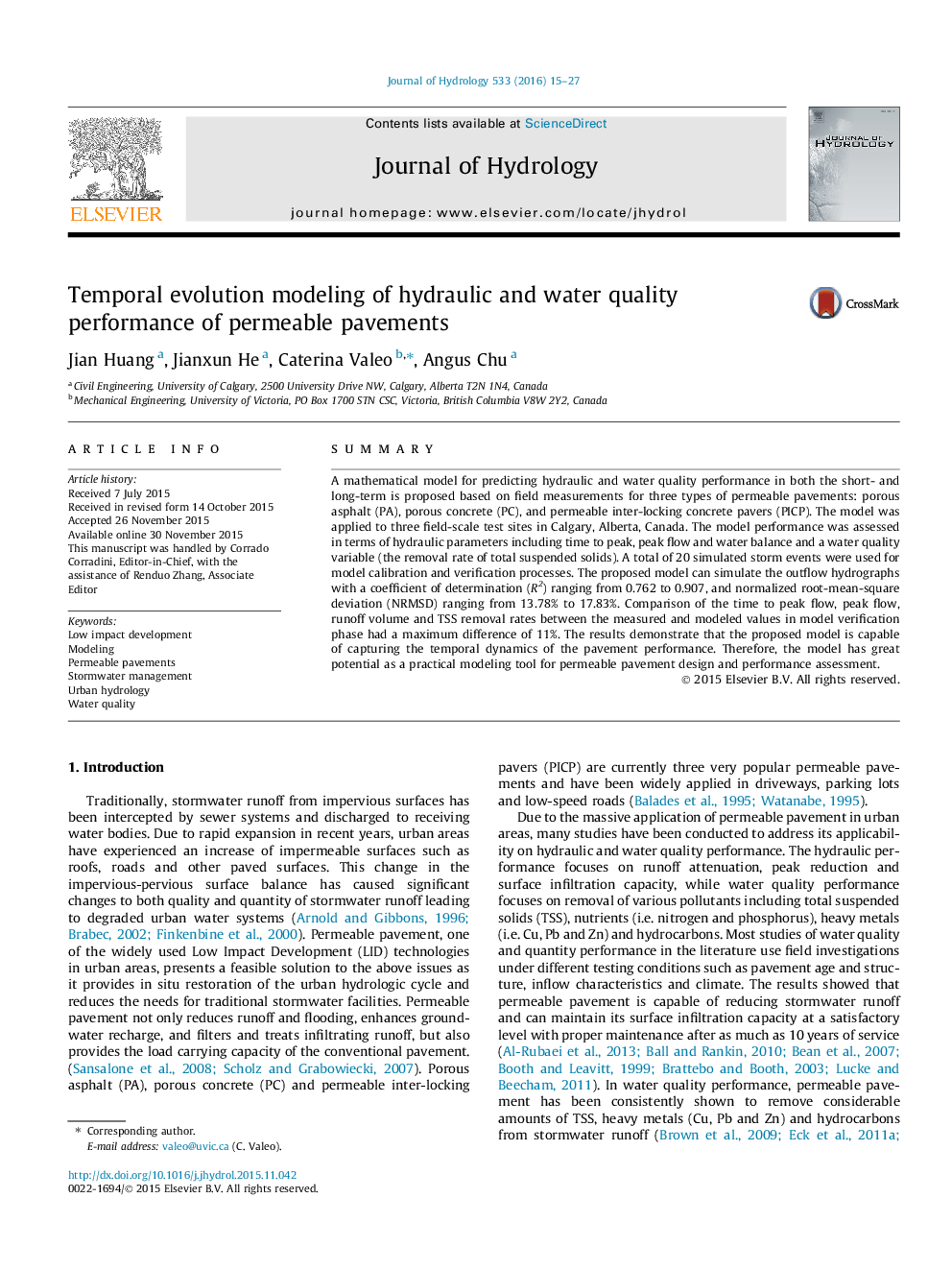| Article ID | Journal | Published Year | Pages | File Type |
|---|---|---|---|---|
| 6410449 | Journal of Hydrology | 2016 | 13 Pages |
â¢Physically based modeling fluid flow through three types of porous pavement.â¢Successfully verified on time to peak flow, peak flow, runoff volume, TSS removal.â¢Very useful for design/management of urban water in low impact developments.
SummaryA mathematical model for predicting hydraulic and water quality performance in both the short- and long-term is proposed based on field measurements for three types of permeable pavements: porous asphalt (PA), porous concrete (PC), and permeable inter-locking concrete pavers (PICP). The model was applied to three field-scale test sites in Calgary, Alberta, Canada. The model performance was assessed in terms of hydraulic parameters including time to peak, peak flow and water balance and a water quality variable (the removal rate of total suspended solids). A total of 20 simulated storm events were used for model calibration and verification processes. The proposed model can simulate the outflow hydrographs with a coefficient of determination (R2) ranging from 0.762 to 0.907, and normalized root-mean-square deviation (NRMSD) ranging from 13.78% to 17.83%. Comparison of the time to peak flow, peak flow, runoff volume and TSS removal rates between the measured and modeled values in model verification phase had a maximum difference of 11%. The results demonstrate that the proposed model is capable of capturing the temporal dynamics of the pavement performance. Therefore, the model has great potential as a practical modeling tool for permeable pavement design and performance assessment.
